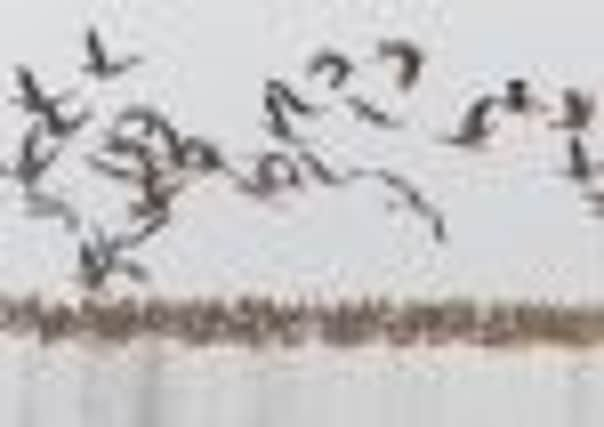Outdoors: Manmade damage has been reversed at one of the RSPB’s flagship reserves


It only seems right, therefore, that where appropriate the same hand should remedy the damage and return these areas back to their former glory.
One such place is the southern edge of Loch Leven in Kinross-shire, which up until the 19th century was a wonderful mosaic of pools and channels, a marshy flood plain that was home to numerous bog-loving plants, dragonflies and birds such as geese, ducks and waders.
Advertisement
Hide AdBut in the mid-1830s the bed of the River Leven exiting the loch was lowered, the river course re-aligned and sluice gates installed. It was at the time, of course, an economic necessity, given the demand for a more stable water supply from growing downstream industries and for landowners looking to increase agricultural productivity. The impact on the environment, however, was dramatic, with the area of wetland and loch shrinking to three-quarters of its former size.
However, good remnants of these marshy meadows remained and it was still a great place for wildlife, indeed so much so that the southern fringe of Loch Leven has been one of the RSPB’s flagship reserves in Scotland for many years. But now a redevelopment project has been successfully completed at the site, which has made the area even better for its diverse range of fauna and flora.
The redevelopment at the reserve formerly known as Vane Farm, but now renamed RSPB Loch Leven, has provided improved habitat for many birds and revamped facilities for visitors, thanks to a generous grant from Biffa Award and the Rural Tayside LEADER 2007-2013 programme. According to site manager Uwe Stoneman, the work has “re-energised’ the wetland by enhancing a significant part of the area for a number of breeding waders including lapwing, redshank, snipe, curlew and oystercatcher.
“We have made the area bigger, flatter, wetter and better,” he says. “We have changed the hydrology to parts of the site and improved its capacity to collect water, and also lowered it so as to get closer to the water table. It is early days yet but already we are seeing notable benefits to birds, in particular breeding lapwings, where the number of nesting attempts has so far doubled.”
It is anticipated that other breeding waders and ducks will also benefit, although because these species tend to be more secretive than lapwings, it will take some time before any increases can be fully assessed. The larger area of wetland also means that the main hide is now right on the edge of the water enabling visitors to get fantastic views of birdlife. The approaches to the various hides have also been sympathetically landscaped so that access can be gained without fear of disturbing nearby birds.
“In the main hide you are practically right on the water and ducks and other birds can be seen close-up, which visitors really enjoy,” says Uwe. “We have also made significant improvements to the visitor centre, including the café, shop and reception area, as well as enhanced interpretation facilities.”
Advertisement
Hide AdThis really is a loch for all seasons, with the nesting frenzy of spring and summer being replaced by huge influxes of wintering ducks, geese and swans in autumn. Such is the importance of the reserve for whooper swans that at peak times it can hold up to 10 per cent of Scotland’s wintering population. But it is not all about birds, and the reserve hosts a vast array of other creatures and plants, and is also home to the world’s first bumble bee sanctuary in the shape of a wildflower-rich meadow.
But perhaps of even greater significance is the role that RSPB Loch Leven is playing in raising the awareness of people about the importance of our environment. It is a key national centre for environmental education, receiving up to 50,000 visitors and 250 school groups each year. It may be a cliché, but children really are the future when it comes to protecting the environment, and helping them engage with nature must be one of the most worthwhile things we can do.
• For more information visit www.rspb.org.uk